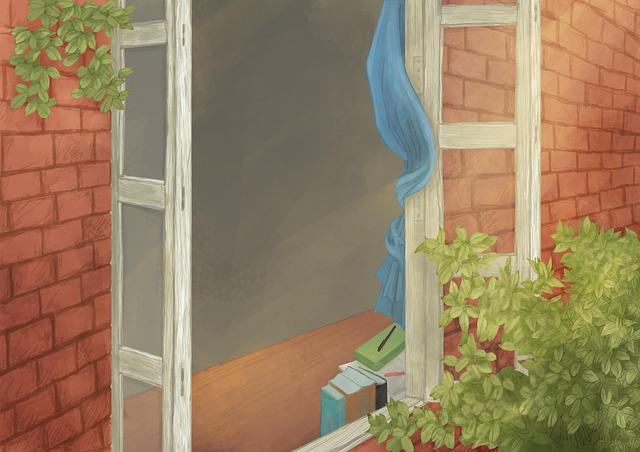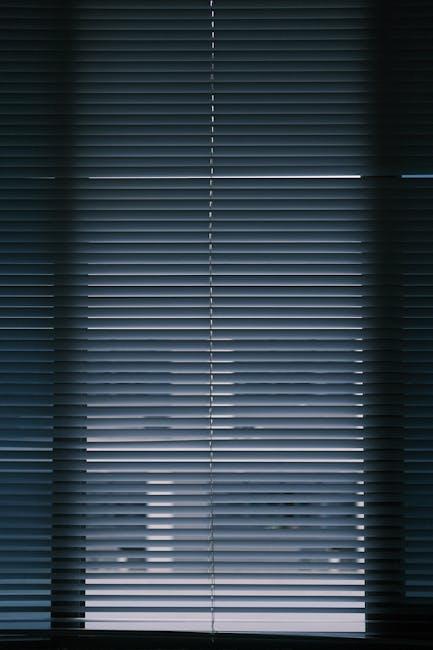In a world that never sleeps, where the hum of city life and the glow of screens can blare into the night, the quest for restful slumber frequently enough feels like an elusive dream. Amidst this modern chaos, one seemingly simple solution stands out: blackout curtains. These fabric sentinels promise to shroud our bedrooms in darkness, offering a cocoon of tranquility that many instinctively seek. But thier impact goes beyond mere aesthetics; the interplay between light, sleep quality, and our body’s natural rhythms begs exploration.At the heart of this discussion is melatonin, the hormone that guides our sleep-wake cycles and whose production can be profoundly influenced by exposure to light. This article delves into the relationship between blackout curtains and sleep quality,unraveling how the right drapery can enhance your nightly rest by effectively blocking light and fostering an environment conducive to melatonin production.Together, let’s uncover the science of sleep in our modern age and understand how a simple choice in window treatment can transform the quality of your nighttime retreat.
Understanding the Impact of Light on Sleep Quality
Light plays a pivotal role in regulating our sleep cycles, primarily through its influence on melatonin production. This hormone, which is secreted by the pineal gland in response to darkness, signals the body that it is time to wind down. Exposure to radiant light—notably blue light from screens or streetlights—can inhibit melatonin’s release,making it arduous to fall asleep and maintain quality rest. To combat this, many individuals are turning to solutions like blackout curtains, which effectively block external light, creating a much darker sleeping environment conducive to uninterrupted slumber.
The adjustment to a light-free sleep zone bears numerous benefits for sleep quality. Research suggests that individuals who sleep in darker rooms experience deeper REM cycles, leading to improved cognitive function and emotional well-being. By reducing light pollution through the use of blackout curtains, you can significantly enhance your sleep experience. Consider the following benefits of optimizing your sleep environment:
- Enhanced Melatonin Production: Maximizes natural sleep hormone secretion.
- Deep sleep Induction: Promotes prolonged periods of restorative sleep.
- Reduced Nighttime Disruptions: Minimizes awakenings due to light disturbances.

The Role of blackout Curtains in Enhancing melatonin Production
Light plays a pivotal role in regulating our circadian rhythms, and understanding how it affects melatonin production is essential for improving sleep quality. Melatonin, frequently enough referred to as the “sleep hormone,” is produced by the pineal gland in response to darkness. When exposed to light, especially blue wavelengths emitted by screens and streetlights, melatonin levels drop, signaling the body to stay awake. This is where blackout curtains prove to be an invaluable asset. By effectively blocking out external light, these curtains create a sleep-kind environment that encourages the body to produce melatonin more efficiently, aiding in the transition to sleep.
Incorporating blackout curtains into your bedroom has several benefits that contribute to improved melatonin production and, consequently, better sleep quality. Consider the following points:
- Enhanced darkness improves melatonin secretion.
- Quieter environment reduces distractions, promoting tranquility.
- Temperature control helps maintain an ideal sleeping climate.
- Improved routine fosters a disciplined sleep schedule.
By creating a dark, calm, and pleasant space, blackout curtains help harmonize the body’s natural rhythms, encouraging restorative sleep. Their role in optimizing light exposure results in a more effective melatonin release, which is essential for achieving that deep, restorative sleep we all crave.

Choosing the Right Blackout curtains for Optimal Darkness
When it comes to achieving optimal darkness for your sleep environment, selecting the right blackout curtains is crucial. Consider the fabric type and weave density; thicker, tightly woven materials typically offer better light-blocking capabilities. Look for options wiht a thermal lining as they not only darken the room but also help maintain temperature, promoting a more comfortable sleep. Pay attention to the length and fit as well; curtains that extend beyond the frame and touch the floor can minimize light leakage effectively. Here are some features to explore:
- Light-blocking technology: Curtains designed specifically for blackout functionality.
- Colour: Darker colors frequently enough absorb more light.
- Insulation properties: Helps in energy conservation.
Additionally, it’s essential to consider the installation method. choose a mounting style that will maximize light blockage around the edges, such as a ceiling mount or an outside mount that allows the curtains to overlap the window frame. Don’t underestimate the power of curtain accessories; curtain clips and tiebacks can help in managing light exposure when the curtains are drawn back during the day.The following table summarizes the key features to look for in blackout curtains:
| Feature | description |
|---|---|
| Fabric Material | Thick and tightly woven for maximum light blockage. |
| Length | Full-length for better coverage and minimal light leakage. |
| Insulation | Helps maintain temperature and improve energy efficiency. |
| Mounting Style | Ceiling or outside mounts for optimized light control. |

Establishing a Sleep-Friendly Environment Beyond Light Control
Creating a serene atmosphere conducive to rest involves multiple elements beyond merely blocking light. Aroma plays a significant role in shaping our sleep experience; incorporating calming scents such as lavender, chamomile, or jasmine can enhance relaxation. Additionally, maintaining a comfortable room temperature is crucial. Aim for a cooling effect, as studies indicate that sleeping in cooler environments fosters deeper sleep stages. Here are some strategies to consider:
- Use essential oil diffusers or scented candles.
- Keep the thermostat set between 60°F to 67°F (15°C to 19°C).
- Consider soundproofing solutions like rugs or acoustic panels to minimize noise disturbances.
Beyond smell and temperature, the texture and arrangement of your sleeping space can further influence your slumber. Investing in high-quality, breathable bedding can make a significant difference in comfort, while decluttering the bedroom creates a more inviting atmosphere.When organizing your room, keep the following tips in mind:
| Tip | Description |
|---|---|
| Bedding | Choose natural fibers like cotton or linen for breathability. |
| Furniture Placement | Position your bed away from the door for a sense of security. |
| Color Scheme | Opt for soft, muted colors to create a calming atmosphere. |
To Conclude
In the quest for restful nights and rejuvenating sleep, the role of blackout curtains emerges as a silent yet powerful ally. By seamlessly blocking unwanted light, these dedicated drapes create an environment conducive to unbroken slumber, allowing our bodies to embrace restorative sleep cycles and optimize melatonin production. As we close the chapter on this exploration of light and its impact on our sleep quality, we are reminded of the intricate dance between our surroundings and our biology. investing in blackout curtains may not just transform our bedrooms into tranquil retreats but also pave the way for a healthier, more balanced life. So, as you prepare to usher in the dark, let your space be a sanctuary where restful nights meet vibrant days—a testament to the harmony between light, sleep, and well-being.






